Executive Education
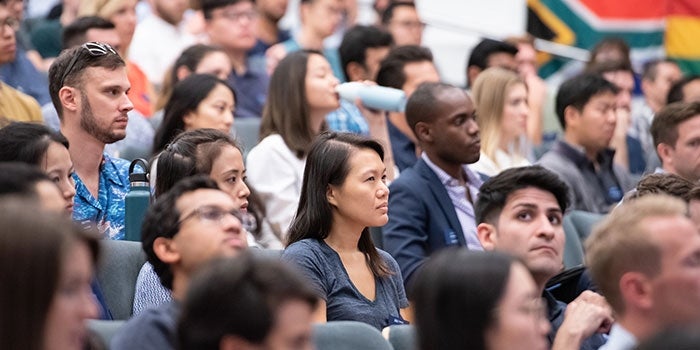
How We Partner with You
You have unique goals and development needs. We work collaboratively at every phase of the process. From design to delivery and beyond, our efforts will be guided by and reflect your input.
Start The ConversationHere is how we partner with you to prepare your executives for what’s next in the global marketplace.
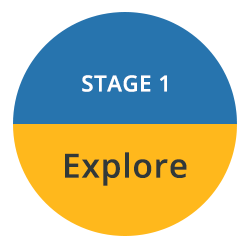
We work with you to understand your business, key challenges and objectives, and we assess how our faculty’s expertise can help transform your organization.
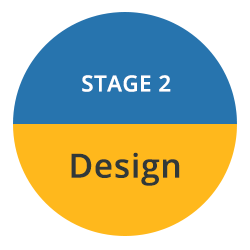
Together, we craft a highly targeted and powerful learning experience that focuses on understanding leadership behaviors, team building, company-focused projects and “roll-up-your-sleeves” activities.
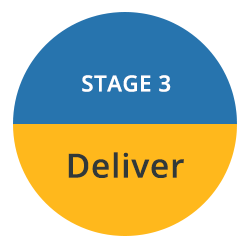
Learning elements customize the experience to each organization’s specific needs and enable your executives to maximize their time in the learning process. Guided by our distinguished faculty and expert program team, leaders emerge.
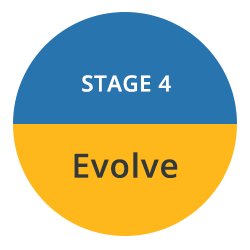
Post delivery, we stay in the loop, measuring and evaluating progress toward established goals. Future iterations evolve based on the measurable effects of the inaugural program, enabling an authentic cycle of individual and organizational transformation to emerge.
Taught the Right Way
Adapt
The process of adapting is the process of preparing for change. It is an inward journey: the gathering of all the input that led you here, personally and organizationally. Assessing your personal managerial and leadership strengths and limitations and identifying key organizational issues and challenges are critical elements of this phase.
Catalyze
The trick to catalyzing is not just mastering the tools yourself. It is also about empowering your team and peers to do the same. Your ability to create and communicate clear organizational goals and inspire independent action by your team will bring you the greatest leverage in leading change within your organization.
Transform
The key to achieving transformation is driving strategic change initiatives within your organization while inspiring others to do the same. As a result, the organization and your career will not just survive, they will thrive.
Measurable Impact
Reflection is a critical skill for today’s executive. A custom-designed Action Journal incorporated into the program is intended to help participants reflect on their experience throughout the curriculum.
To help participants better understand themselves and the tools they are using in this program, coaching sessions can be incorporated throughout the experience.
To enhance the effectiveness of the program, participants will take part in team-based application projects, based on actual strategic business issues that exist in your organization or your industry.
Leveraging technology to create a virtual learning environment, we extend the program experience beyond the classroom. This element can be implemented as a primer, applied throughout the program or offered upon culmination of the classroom experience to bolster application of content in the workplace setting.
Participants select an organizational issue they would like to address individually that they believe will better position them as strategic players within their organization. Application projects provide opportunities to apply classroom learnings from the program in a work context.
Peer Mentoring Groups are structured to help participants build deeper, more meaningful relationships with one another over the course of the program and beyond. Executives are equipped to construct active learning communities once they leave the classroom.
We incorporate various assessment tools into our programs, emphasizing the value of understanding individual strengths and areas of development and, most important, how to apply these discoveries to an organizational context.
Bringing coursework to life in a dynamic, relevant way through simulation or “gameification” is an integral aspect of the UCLA Anderson Executive Education experience. It empowers participants to analyze and solve complex problems in an active learning environment. Careful deployment at different points in the learning journey allows us to measure progress on multiple dimensions.
In order to stimulate creativity, generate excitement and increase learner retention, participants are exposed to a variety of performance tools, such as improvisation comedy, theatrical elements, sports, workshops or other action-based activities. Instructor and peer-to-peer feedback provide real-time evaluation of progress.
Building Your Learning Journey
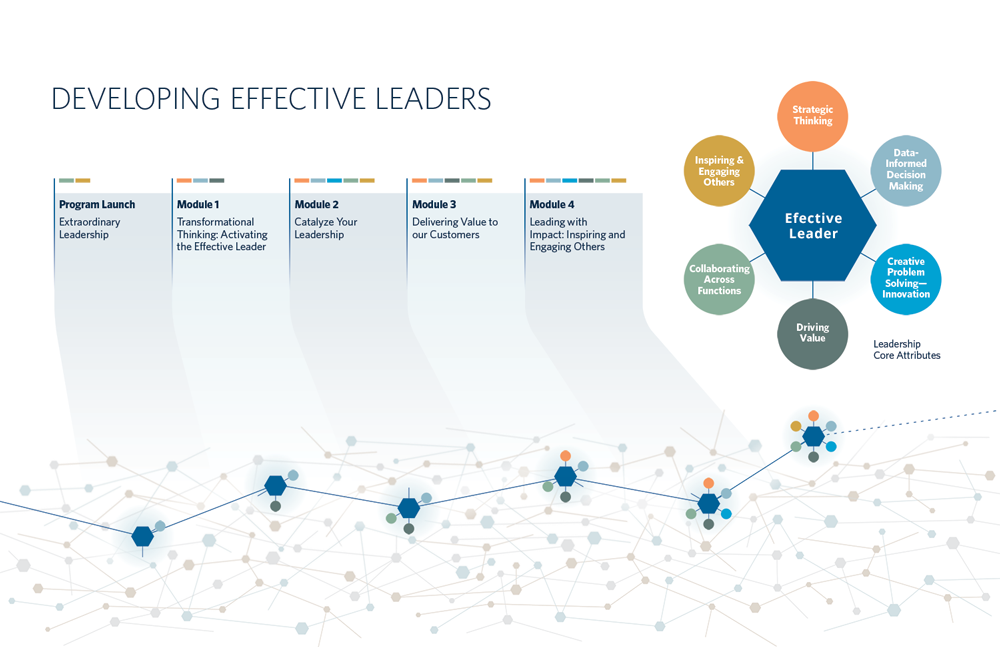
Program Launch
Extraordinary Leadership
- The Power of Storytelling
- Extraordinary Leadership
- Creating Purpose to Drive Motivation and Alignment
Module 1
Transformational Thinking: Activating the Effective Leader
- The Value Chain
- The Future of the Industry
- Strategic Thinking: Create, Capture, Deliver Value
- Authentic Leadership
- Strategic Financial Decision Making
- Bringing the Future to the Present
Module 2
Catalyze Your Leadership
- Leading the Change
- Creative Problem Solving
- Speed and Agility
- Overcoming Decision Inertia
- Leading Teams Through Conflict
- Viable Ideas – Taking Innovation to Action
Module 3
Delivering Value to our Customers
- Leaders Levers Simulation
- Turning Strategy into Execution: Your Role as Translator
- Organizational Culture: Your Role as Change Agent
- Living the Brand
Module 4
Leading with Impact: Inspiring and Engaging Others
- Communicating your Message with Impact: Getting Alignment
- Leading and Developing Others
- Innovation
- Bringing Chaos to Order
- Program Close
Intersession 1
- Leadership Assessment
- Individual Coaching Session
- Webinar
- Strategy Assignment
Intersession 2
- Individual Leadership Coaching
- Webinar for On-site Teams
- Project Team Work
- Faculty Coaching Calls
Intersession 3
- Individual Leadership Coaching
- Webinar for On-site Teams
- Project Team Work
- Faculty Coaching Calls
- Delivering Value Assignment
Intersession 4
- Webinar
- Project Team Work
- Faculty Coaching Calls
- Communication Assignment
Call (310) 825-2001